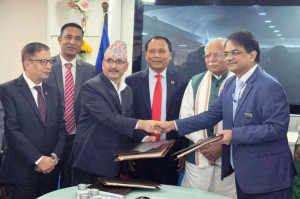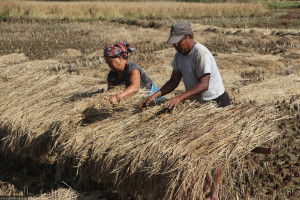Money
Clinker imports jump nearly sixfold in H1
Nepal has been heading towards self-sufficiency in cement, but at the same time, imports of clinker, one of the key raw materials used in manufacturing it, have soared.
Nepal has been heading towards self-sufficiency in cement, but at the same time, imports of clinker, one of the key raw materials used in manufacturing it, have soared.
According to the Trade and Export Promotion Centre (TEPC), the country imported clinker worth Rs8.97 billion in the first six months of the current fiscal year. The figure is an almost sixfold jump from Rs1.52 billion in the first half of the previous fiscal year 2015-16.
Government records show that the country has abundant limestone reserves, but cement manufacturers have preferred to rely on imports instead of tapping the deposits for lack of a conducive environment for industrial development.
According to the Cement Manufacturers Association President Dhurba Thapa, the major reason behind the surge in clinker imports this year is the slump last year due to a blockade imposed by India. “Imports of clinker from India account for around 35-40 percent of our total consumption,” Thapa said.
Prabal Jung Pandey, executive director of Eastern Cosmos Cement, said, “It is not that we haven’t succeeded in establishing a clinker industry. It has been improving gradually, but the current scenario seems bleak because of a significant surge in demand for cement which has compelled domestic factories to increase the import of clinker,” Pandey said.
While clinker imports have soared, the story of cement is different. In the first six months of the current fiscal year, Nepal imported cement worth Rs509 million, a decline of 11.3 percent year-on-year. In the first half of fiscal 2015-16, the country imported cement worth Rs574.67 million.
According to Pandey, there are 48 cement factories in the country. Among them, 14 produce their own clinker and have a grinding unit.
The country’s cement requirement has soared in recent years following a boom in the construction industry. Domestic cement companies say they have been witnessing a 15-20 percent growth in sales every year.
The increase in demand has prompted many businesses in Nepal to diversify their investments into cement manufacturing. In addition to local entrepreneurs, the cement sector has been attracting foreign investors too.
Hongshi Shivam Cement, a Nepal-China joint venture company, has started building its cement plant at Sardi in Nawalparasi. China’s Hongshi Holding Group is investing Rs36 billion (70 percent of the outlay) in the project while the rest of the capital is being injected by the local partner. The factory will have a capacity of producing 6,000 tonnes of cement per day and is expected to come online in 2017.
Likewise, the Dangote Group of Nigeria has a plan to invest Rs70 billion in a cement factory in Nepal.
“This is because of the fact that there is a huge infrastructure gap in Nepal,” Pandey said, adding that the country would be completely self-reliant in cement and clinker within three to four years.




 16.12°C Kathmandu
16.12°C Kathmandu












